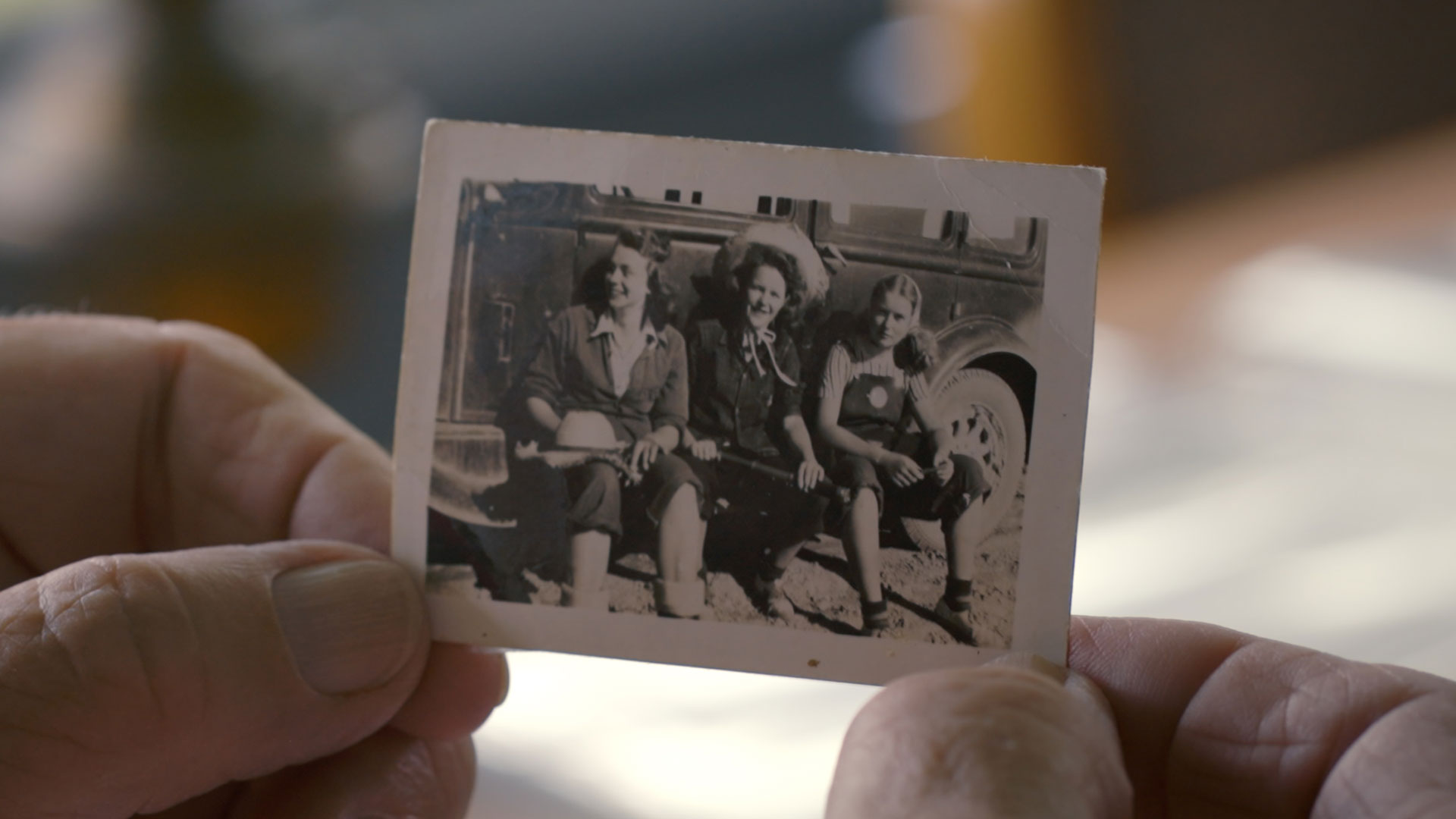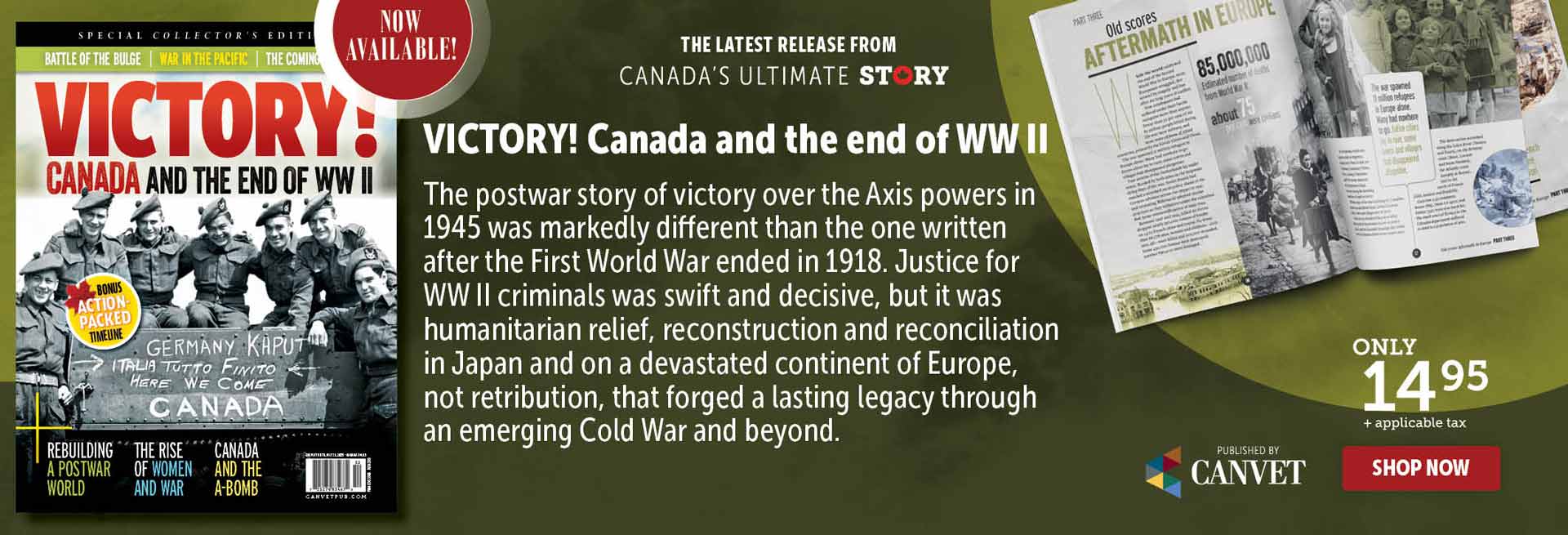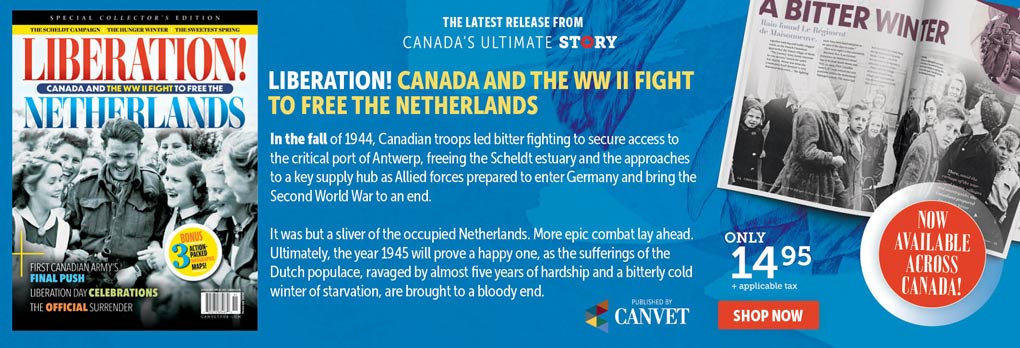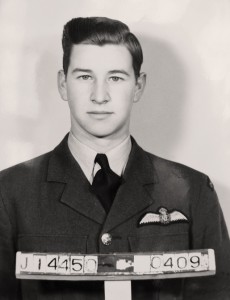
Author Bonnie Sitter was searching through old family photographs when she found a black-and-white image of a group of young women, with the caption, “Farmerettes 1946.” [welendahand.ca/]
After her husband passed away in 2016, Sitter had been sifting through items when she unearthed black-and-white images of three girls. Scrawled on the back of each was “Farmerettes,” the name bestowed upon Canadian teenagers who, throughout much of the Second World War and beyond, worked in market gardens, orchards and canneries to help maintain food production for the broader Allied war effort.
The pictured farmerettes, three of an estimated 40,000 in Ontario alone, had served on her late spouse’s family farm. Inspired to uncover more, Sitter collaborated on a book with Shirleyan English—herself a postwar-era farmerette—leading to Onion Skins and Peach Fuzz: Memories of Ontario Farmerettes, published in 2019.
Meanwhile, filmmaker and musician Colin Field was playing at the Goderich, Ont., Celtic Roots Festival when he met author and photographer Sitter. There, he says, “she started telling me about the farmerettes,” although it wasn’t until after the COVID-19 pandemic that the two decided to join forces for their latest project.
We Lend a Hand: The Forgotten Story of Ontario Farmerettes, which premiered in December 2024 at the Junction North, International Documentary Film Festival, highlights the women food producers of Ontario from 1941 to 1952. During its 50-minute run-time, the film includes interviews with 20 surviving contributors.
With farmerettes increasingly, deservedly, and indeed finally receiving far greater recognition—not least through a successful lobbying campaign for a Canada Post commemorative stamp led by Sitter herself—Legion Magazine sat down with the documentary’s director and producer. Here, Field details the film’s making.
About the farmerette programOfficially called the Ontario Farm Service, the farmerette program was established by the provincial government. Teenage girls in high school could volunteer for the summers, get out of doing their final exams, and assist with agricultural work that would support the war effort at home and overseas, receiving pay at the going rate.
The girls mostly stayed in work camps in the area. Each day, farmers would come and request help from however many volunteers they wanted for different duties, from picking fruit to hoeing to planting to harvesting vegetables and other tasks.
The young women came from different backgrounds and sometimes different parts of the country, including teenage girls from Quebec who rode their bicycles out to the Niagara region just so they could lend a hand. They were exposed to different ideas and different people, from German prisoners of war to Japanese-Canadians who had been forcibly removed from the West Coast. Most of these women had almost no farming experience, but they quickly showed that they were capable.
Their efforts provided the produce for rations, for soldiers overseas, and for the people of the U.K. who were getting starved out through [German] blockades.
When the Second World War ended, the women continued working until 1952 because the program had been so immensely successful. It wasn’t until there was an influx of refugees and immigrants to Canada from Europe, whose families had been farming for centuries, combined with the mechanization of the ’50s that the program petered out—and then it was basically forgotten. But the farmerettes had worked so well and so hard. They had the opportunity to shine—and took it.
About We Lend a Hand
My goal was to have the story told through [the surviving farmerettes’] first-hand experience. It was really about talking to the women who were there, who lived it.
I interviewed 20 women who are still alive and able to tell those stories out of an estimated 40,000 [Ontario farmerettes]. Some of them are over 100 now, most of them in their late 90s, and yet many of them still maintain such strong memories.
Some of the things [they discussed] they had never talked about. In several cases, their families didn’t even know they were farmerettes until I contacted them. We even had listening family members struggle to keep quiet mid-interview, at times laughing and gasping at the stories they heard about what their mothers had done.
The [documentary’s] overriding theme, aside from the actual work taking place on the farms themselves, is really a coming-of-age story in which these young women go off on an adventure, not knowing what’s ahead of them and often not believing it’s something they can do. They doubted themselves, and everyone doubted them.
Ultimately, of course, the growth they experienced and the camaraderie they found meant they could look back and say, “That was the best thing I ever did—the best summer I ever had.” They felt a sense of pride and honour in what they achieved.
If you look at the [film’s] credits, you’ll see that many people helped bring these stories to light—including Bonnie, Shirleyann, and the young filmmakers I hired for the process. Many families [of the surviving farmerettes] and organizations supported us through sponsorships, donations, and by ensuing that the women themselves could tell the stories and be recognized while they’re still with us.
This abridged interview has been edited for brevity and clarity.
Advertisement






















